Bromeliad Plant
- February 8, 2024
- 0 comment
Bromeliads, a diverse family of plants native to the tropical and subtropical regions of the Americas, have captivated botanists and enthusiasts alike with their striking beauty, unique features, and remarkable adaptability. From the lush rainforests of South America to the arid deserts of Mexico, bromeliads thrive in a wide range of habitats, showcasing an array of colors, shapes, and sizes. In this article, we delve into the fascinating world of bromeliads, exploring their biology, ecology, cultivation, and the enduring allure they hold for plant lovers worldwide.
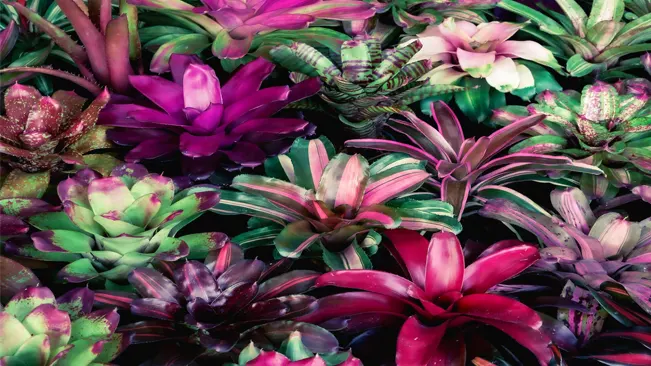
| Benefit | Description |
|---|---|
| Ornamental Beauty | Bromeliads are prized for their stunning foliage, vibrant colors, and unique architectural forms, enhancing the aesthetics of gardens, landscapes, and indoor spaces. |
| Low Maintenance | Bromeliads are relatively low-maintenance plants, thriving with moderate watering and occasional fertilization, making them ideal for busy gardeners or those with limited time. |
| Adaptability | Highly adaptable, bromeliads can thrive in various conditions, including different light levels, temperatures, and humidity levels, suitable for a wide range of climates. |
| Air Purification | Bromeliads help improve indoor air quality by removing toxins and pollutants, absorbing carbon dioxide, and releasing oxygen during photosynthesis. |
| Habitat Enhancement | Bromeliads provide valuable habitat and food sources for wildlife, creating microhabitats within gardens and natural areas, supporting diverse ecosystems. |
| Erosion Control | In outdoor landscapes, bromeliads stabilize slopes and retain moisture in the soil, preventing soil erosion and acting as natural mulch with their dense foliage. |
| Edible Fruits | Some bromeliad species produce edible fruits, such as the pineapple, offering not only ornamental value but also a delicious and nutritious food source for humans and wildlife. |
| Educational Value | Bromeliads offer educational opportunities, allowing people to learn about plant biology, ecology, and |
The Bromeliad Family
Bromeliads belong to the family Bromeliaceae, which comprises over 3,000 known species distributed among more than 50 genera. These plants exhibit remarkable diversity, ranging from diminutive epiphytes clinging to tree branches to terrestrial giants towering over forest floors. One of the most iconic members of the family is the pineapple (Ananas comosus), cultivated globally for its sweet and tangy fruit. However, beyond the pineapple, bromeliads encompass a vast array of species, each with its own unique characteristics.
Distinctive Features
One of the most distinguishing features of bromeliads is their rosette-forming growth habit, characterized by spirally arranged leaves that form a central cup or tank. This reservoir collects rainwater and organic debris, creating a microhabitat that supports a variety of organisms, including insects, amphibians, and even small mammals. Some bromeliads have evolved specialized adaptations, such as trichomes (tiny scales or hairs) on their leaves, which help them absorb moisture and nutrients from the air, enabling them to thrive in nutrient-poor environments.
Rosette-forming Growth Habit
Bromeliads are renowned for their rosette-forming growth habit, wherein leaves are arranged in a spiral pattern around a central point. This arrangement results in a symmetrical and often aesthetically pleasing appearance. The rosette shape also serves a functional purpose, facilitating the collection of water and organic matter.
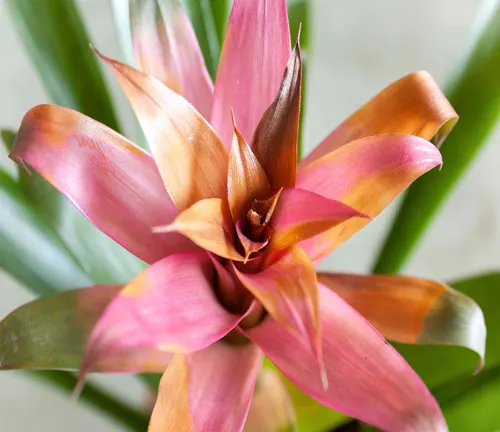
Central Cup or Tank
A defining characteristic of many bromeliads is the presence of a central cup or tank formed by the tightly arranged leaves. This reservoir collects rainwater, as well as fallen leaves and debris, creating a small ecosystem within the plant itself. The water-filled cup serves as a habitat for various organisms, including insects, amphibians like tree frogs, and even small mammals such as tree-dwelling rodents.

Microhabitat Creation
The water-filled central cup creates a microhabitat that supports a diverse array of life. In addition to providing a breeding ground for amphibians and insects, the cup also hosts colonies of microorganisms, including bacteria and algae. These organisms break down organic matter, releasing nutrients that are subsequently absorbed by the bromeliad.
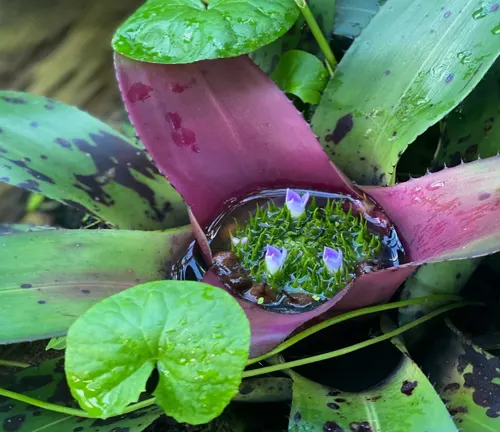
Specialized Adaptations
Many bromeliads have evolved specialized adaptations to thrive in their native habitats. One such adaptation is the presence of trichomes, which are tiny scales or hairs found on the surface of the leaves. These trichomes serve multiple functions, including reducing water loss through transpiration, reflecting excess sunlight to prevent leaf damage, and absorbing moisture and nutrients from the air. This latter function is particularly crucial for bromeliads growing in nutrient-poor environments, such as epiphytic species that inhabit tree branches.
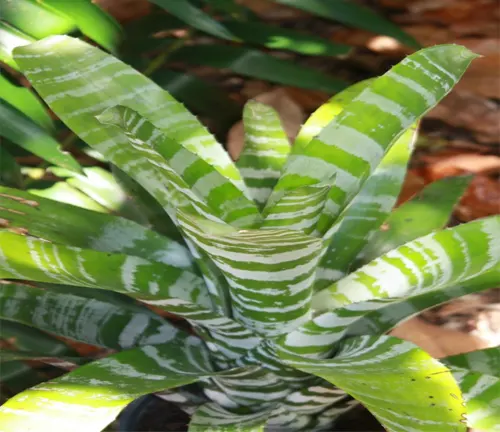
Nutrient Acquisition: Bromeliads have developed ingenious strategies for acquiring nutrients, despite growing in environments where soil nutrients may be scarce. In addition to absorbing water and nutrients through their roots, bromeliads utilize their specialized leaves and central cups to capture atmospheric moisture and organic debris. This organic matter decomposes within the central cup, releasing essential nutrients that are then absorbed by the plant’s roots or directly through specialized structures on the leaves.
Ecological Significance
Bromeliads play a vital role in their ecosystems, serving as important habitat and food sources for a wide range of organisms. The water-filled cups formed by their leaves provide breeding sites for tadpoles, aquatic insects, and other aquatic organisms, contributing to local biodiversity. Additionally, the detritus accumulated in bromeliad tanks serves as a nutrient source for microbial communities, which in turn support higher trophic levels within the ecosystem. In some cases, bromeliads form mutualistic relationships with other organisms, such as ants, which protect the plants from herbivores and in return, benefit from the resources provided by the bromeliad.
- Habitat for Fauna: The water-filled cups formed by bromeliad leaves create unique microhabitats that support a diverse array of organisms. Tadpoles, tree frogs, and other amphibians often lay their eggs in these water-filled bromeliad tanks, providing a safe environment for their development. Additionally, many species of insects, including mosquitoes, beetles, and ants, utilize bromeliad cups for breeding and shelter.
- Contribution to Biodiversity: By providing breeding sites and habitat for various organisms, bromeliads contribute to local biodiversity. They support a complex web of interactions among different species, from tiny microorganisms to larger animals, helping to maintain ecosystem balance and resilience.
- Nutrient Cycling: The detritus that accumulates in bromeliad tanks, including fallen leaves, insect carcasses, and other organic matter, serves as a nutrient source for microbial communities. These microorganisms break down the organic material, releasing nutrients such as nitrogen and phosphorus into the water, which are then absorbed by the bromeliad and other plants in the surrounding ecosystem. This nutrient cycling process is essential for maintaining soil fertility and supporting plant growth.
- Mutualistic Relationships: Bromeliads often form mutualistic relationships with other organisms, such as ants and epiphytic orchids. Ants, in particular, are known to establish colonies in bromeliad tanks, where they feed on insect larvae and protect the plants from herbivores and pathogens. In return, the ants benefit from the resources provided by the bromeliad, including shelter and access to sugary nectar produced by the plant.
- Role in Water Regulation: Bromeliads can also play a role in regulating water flow within ecosystems. In regions prone to heavy rainfall or periods of drought, bromeliads can capture and store water, releasing it slowly over time to help maintain soil moisture levels and prevent erosion. This can be particularly important in tropical rainforests, where rainfall patterns can be highly variable.
Cultivation and Care
Bromeliads have gained popularity as ornamental plants due to their vibrant foliage and unique appearance. They are relatively easy to cultivate, making them suitable for both indoor and outdoor environments. Most bromeliads prefer bright, indirect light and well-draining soil. Watering requirements vary depending on the species and growing conditions, but in general, it’s important to keep the central cup filled with water while ensuring that excess water does not accumulate in the soil, as this can lead to root rot. Fertilization is generally done sparingly, as bromeliads are adapted to nutrient-poor environments.
Light Requirements
Most bromeliads thrive in bright, indirect light. Place them near a window where they can receive filtered sunlight or in a location with dappled shade outdoors. Avoid exposing bromeliads to direct sunlight for extended periods, as this can cause sunburn or leaf damage, particularly for species with thin or delicate foliage.

Watering
Watering requirements for bromeliads vary depending on factors such as species, environmental conditions, and the growth stage of the plant. As mentioned earlier, it’s crucial to keep the central cup of rosette-forming bromeliads filled with water, as this serves as a reservoir for the plant. Use room-temperature water and avoid using softened or distilled water, as these may lack essential minerals. Water the soil sparingly, allowing it to dry out slightly between waterings to prevent root rot.
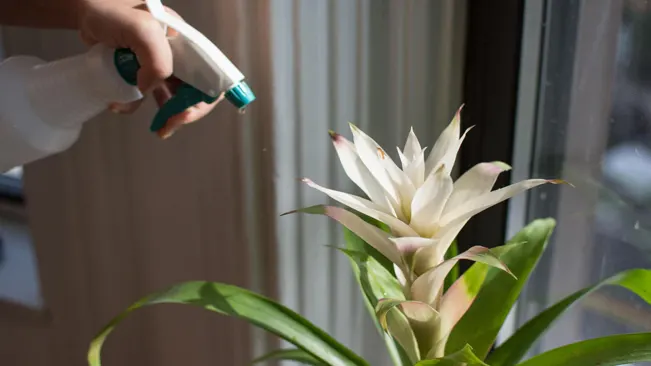
Soil and Potting Mix
Bromeliads prefer a well-draining potting mix that allows excess water to drain freely. A mix of orchid bark, perlite, and peat moss or a specialized bromeliad mix works well. Avoid heavy or compacted soils, as these can retain too much moisture and lead to root rot. Repot bromeliads only when necessary, typically when the plant has outgrown its container or when the potting mix has become degraded.
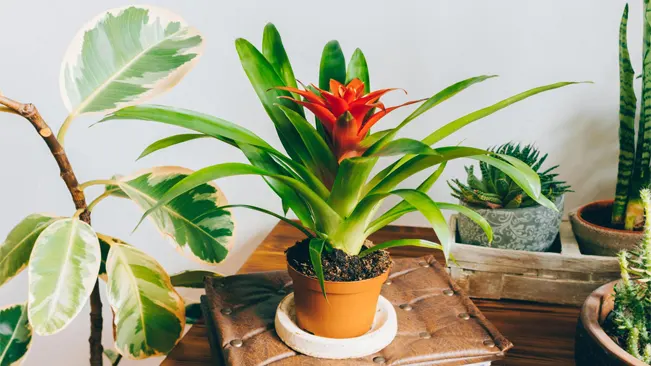
Fertilization
Bromeliads are adapted to nutrient-poor environments and typically require minimal fertilization. Use a diluted, balanced fertilizer formulated for bromeliads or orchids, applying it at half-strength once a month during the growing season (spring and summer). Avoid fertilizing during the plant’s dormant period in fall and winter.
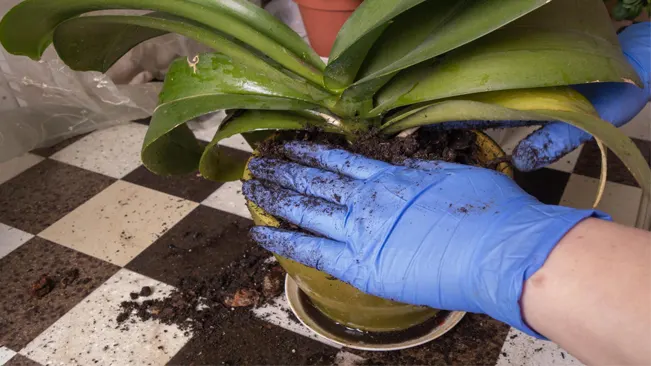
Pest and Disease Management
While bromeliads are relatively pest-resistant, they may occasionally encounter issues such as aphids, mealybugs, scale insects, or fungal infections. Inspect plants regularly for signs of pests or diseases, such as yellowing leaves, distorted growth, or the presence of pests. Treat infestations promptly with insecticidal soap, neem oil, or horticultural oil, following label instructions carefully. Remove and discard any severely affected or diseased plant parts to prevent the spread of pathogens.
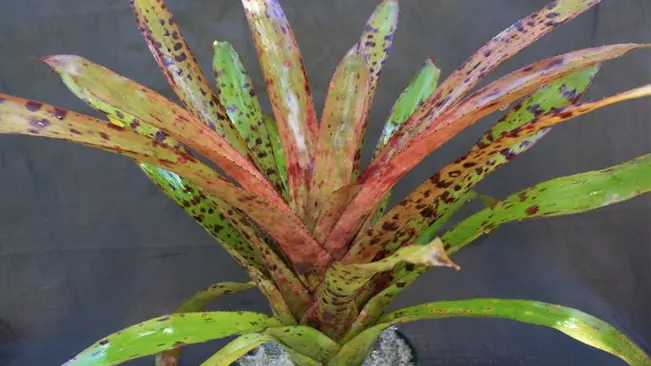
Temperature and Humidity
- Bromeliads generally prefer warm temperatures and high humidity levels, replicating their native tropical environments. Maintain temperatures between 60°F to 80°F (15°C to 27°C) for optimal growth. In drier climates or indoor environments with low humidity, use a humidifier or place the plants on trays filled with water and pebbles to increase humidity around them.
Air Circulation
- Good air circulation is essential for preventing fungal diseases and maintaining overall plant health. Provide adequate ventilation around bromeliads, especially in humid or poorly ventilated environments. Avoid crowding plants together, as this can restrict airflow and promote the spread of pests and diseases.
Different Variety of Bromeliad
Guzmanias
Guzmanias are known for their vibrant, long-lasting inflorescences, which emerge from a central rosette of leaves. The flowers are typically bright red, orange, yellow, or pink, surrounded by colorful bracts. Guzmanias are often grown as indoor plants due to their tolerance of low light conditions.

Neoregelias
Neoregelias are prized for their striking foliage, which often features vibrant hues of red, pink, purple, or green, often with contrasting bands or spots. While the flowers are relatively small and inconspicuous, the colorful leaves make neoregelias popular choices for tropical gardens and indoor displays.
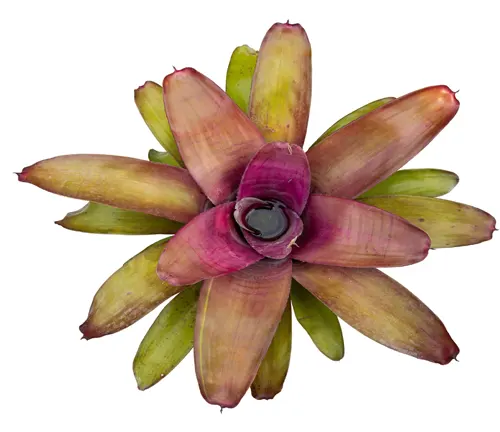
Tillandsias
Tillandsias, commonly known as air plants, are epiphytic bromeliads that grow without soil, attaching themselves to trees, rocks, or other surfaces. They absorb moisture and nutrients through specialized scales on their leaves and are prized for their unique forms and ease of care.
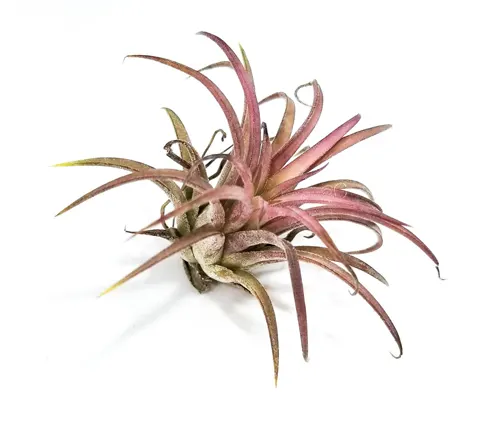
Aechmeas
Aechmeas are characterized by their architectural growth habit and showy inflorescences. The flowers are typically held aloft on tall stalks above a rosette of leaves, and they come in a range of colors, including pink, red, orange, and purple. Aechmeas are popular choices for tropical landscaping and indoor cultivation.
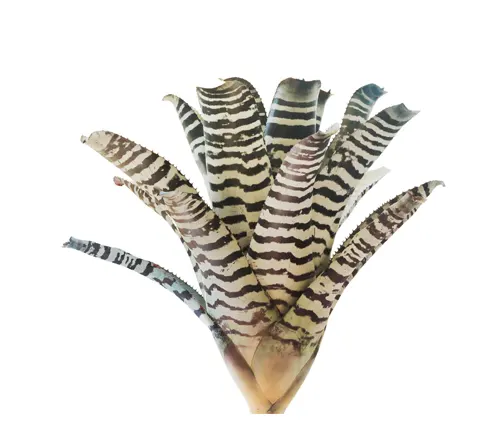
Vrieseas
Vrieseas are known for their dramatic inflorescences, which often feature brightly colored bracts and long-lasting flowers. The leaves are usually narrow and strap-like, forming a rosette that serves as a backdrop for the showy blooms. Vrieseas are prized for their ornamental value and are often used as focal points in tropical gardens and indoor displays.
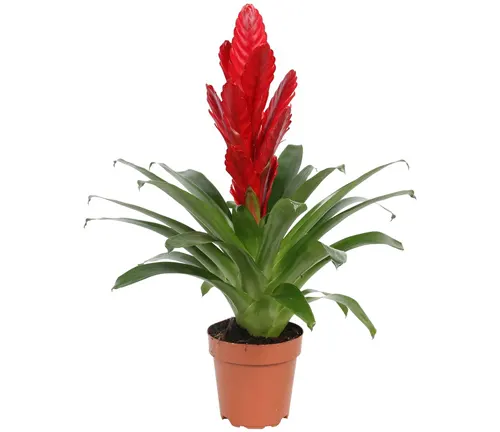
Cryptanthus
Cryptanthus, commonly known as earth stars, are terrestrial bromeliads with low, spreading growth habits. They are valued for their attractive foliage, which often features intricate patterns and colors, resembling star-shaped rosettes. Cryptanthus are well-suited to terrariums and indoor displays.
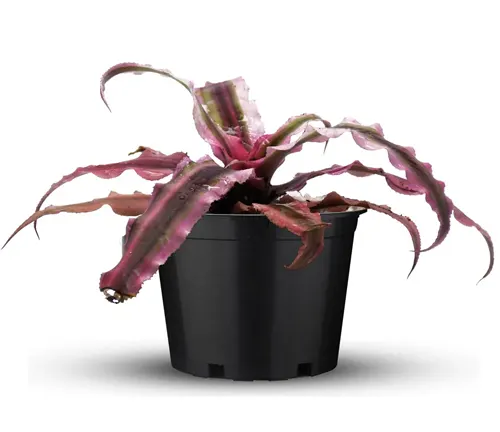
Billbergias
Billbergias are prized for their pendant inflorescences, which hang gracefully from the center of a rosette of leaves. The flowers are typically tubular and come in various shades of pink, purple, red, or yellow. Billbergias are versatile plants that can be grown as groundcovers, epiphytes, or in containers.

Conclusion
Bromeliads are not only fascinating plants in their own right but also important components of their native ecosystems. With their striking beauty, unique adaptations, and ease of cultivation, bromeliads have earned a well-deserved place in horticulture and continue to enchant plant enthusiasts around the world. Whether adorning a windowsill, brightening up a garden, or thriving in their natural habitats, bromeliads serve as a reminder of the incredible diversity and resilience of life on Earth.
FAQs (Frequently Asked Questions)
- What are bromeliads, and where do they originate from? Bromeliads are a diverse family of plants belonging to the Bromeliaceae family, native primarily to the tropical and subtropical regions of the Americas, ranging from the southern United States to Argentina. They encompass a wide variety of species, including epiphytes, which grow on trees, and terrestrial species, which grow in soil.
- How do bromeliads obtain water and nutrients in their natural habitats? Bromeliads have adapted various strategies to obtain water and nutrients. Many species have specialized leaves that form a rosette shape, collecting rainwater and organic debris. This reservoir provides a habitat for microorganisms, which break down organic matter and release nutrients that the plant can absorb through its specialized root system or through its leaves.
- What are some common types of bromeliads found in cultivation? Some common types of bromeliads found in cultivation include the popular Guzmania, Neoregelia, Tillandsia (air plants), Aechmea, and Vriesea. Each genus contains numerous species with unique colors, shapes, and growth habits.
- How often should I water my bromeliad, and what is the best method for watering? The frequency of watering depends on factors such as the species, growing conditions, and climate. In general, it’s best to water bromeliads when the top inch of soil or the central cup (in species with rosette leaves) feels dry. Use room-temperature water and pour it directly into the central cup, ensuring it doesn’t overflow. Avoid leaving stagnant water in the cup for extended periods to prevent rot.
- Do bromeliads require special soil or potting mix? Bromeliads are not overly demanding in terms of soil requirements. They prefer a loose, well-draining potting mix that allows air circulation around the roots. A mix of orchid bark, perlite, and peat moss is commonly used for bromeliads.
- Can bromeliads tolerate different light conditions, and how do I know if they are receiving enough light? Bromeliads can tolerate a range of light conditions, from bright indirect light to partial shade. Different species may have specific light requirements, so it’s essential to research the needs of the particular bromeliad you have. Signs of inadequate light include elongated or leggy growth, pale or yellow leaves, or reduced flowering.
- Are bromeliads safe for pets, such as cats and dogs? Generally, bromeliads are considered non-toxic to cats, dogs, and other pets. However, ingestion may still cause mild gastrointestinal upset, so it’s best to keep them out of reach of curious pets.
- How do I propagate bromeliads, and how long does it take for them to produce pups or offsets? Bromeliads propagate through offsets, also known as pups, which develop from the base of the mother plant. To propagate, wait until the pup is approximately one-third to one-half the size of the parent plant, then carefully remove it with a sharp, sterilized knife or shears. Plant the pup in a small pot with well-draining soil and keep it lightly moist. Depending on the species, pups typically take several months to a year or more to mature and start producing their own offsets.
- Do bromeliads bloom, and if so, how often do they flower? Yes, bromeliads do bloom, and the frequency of flowering varies among species. Some bromeliads bloom only once in their lifetime, typically after several years of growth, while others may bloom annually or more frequently. Flowering is often triggered by environmental factors such as changes in temperature, light, or humidity.
- What are some common pests and diseases that affect bromeliads, and how can I prevent or treat them? Common pests that may affect bromeliads include aphids, mealybugs, scale insects, and spider mites. Diseases such as fungal infections and bacterial rots can also occur, especially if plants are overwatered or exposed to poor air circulation. To prevent pests and diseases, maintain good hygiene by removing dead leaves and debris, avoid overwatering, and inspect plants regularly for signs of infestation. If pests or diseases are detected, treat them promptly with appropriate insecticides or fungicides, following label instructions carefully.

Kristine Moore
Forestry AuthorI'm Kristine Moore, a seasoned garden landscaping professional with over 30 years of experience. My extensive career has been dedicated to transforming outdoor spaces into stunning, sustainable landscapes. With a deep understanding of horticulture, design principles, and environmental stewardship, I have become a respected figure in the field, known for creating harmonious, visually appealing, and eco-friendly gardens. My commitment to excellence and continuous learning in landscaping trends and techniques has solidified my reputation as an expert in garden design and implementation.

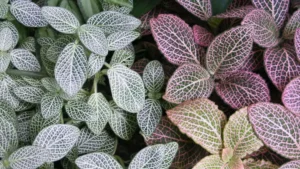
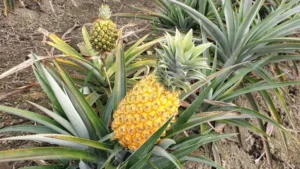
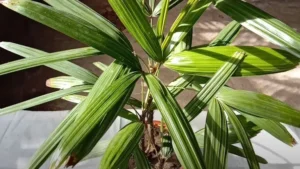


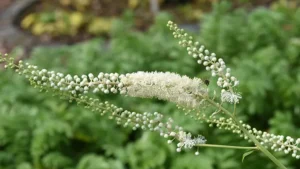
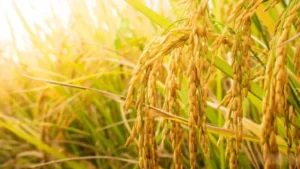
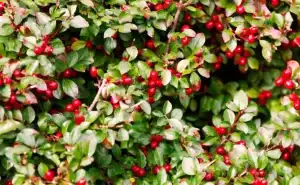
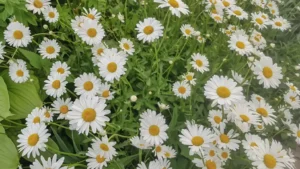
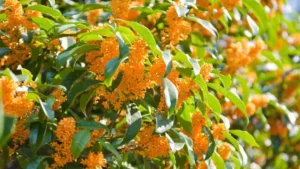
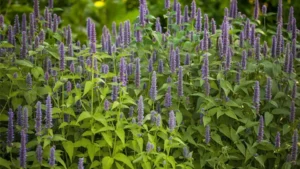
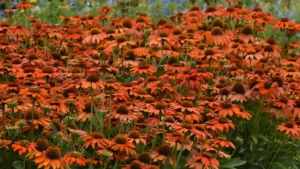
Leave your comment